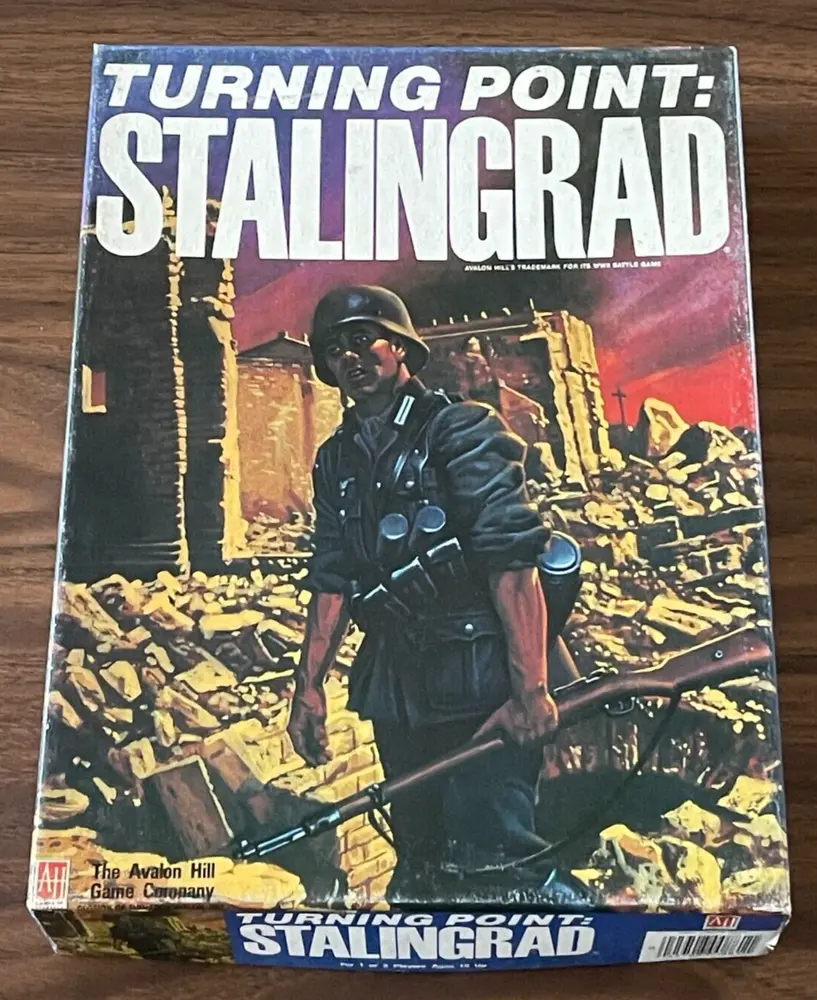Turning Point: Stalingrad (1989)
Turning Point: Stalingrad
“Turning Point: The Battle of Stalingrad” is a two-player board wargame published by Simulations Publications Inc. (SPI) in 1972. The game simulates the Battle of Stalingrad during World War II and the factors that led to the German retreat back to Berlin. The game has been described as “fairly complex” and “moderately difficult”.
Why is Turning Point: Stalingrad Popular?
The game is popular and significant because it:
– Simulates a historically significant event: The Battle of Stalingrad was a turning point in the European theater of World War II.
– Provides an educational experience: The game can be used as an educational aid in the classroom to show the importance of the irrational German dispositions at the beginning of the Russian attack and the hopelessness of the German situation.
– Is part of a series: “Turning Point: The Battle of Stalingrad” is the 20th game in Turning Point Simulations’ Decisive Battles of History Series, which adds to its popularity among history enthusiasts and board game collectors.
Game Components of Turning Point: Stalingrad
How To Setup Turning Point: Stalingrad
Setting up the game involves placing the game board, deploying the German and Soviet units according to the initial setup rules, and distributing the necessary player aid cards. Each player must ensure their units are correctly positioned on the board to reflect the historical starting positions of the Battle of Stalingrad.
Gameplay Mechanics and Game Objective
– German player: Capture Soviet-controlled Map Areas to gain Victory Points.
– Soviet player: Defend and maintain control of Map Areas to prevent German victory.
Player Experience
**Turning Point: Stalingrad** offers a dynamic and varied gameplay experience, with each game being unique due to the semi-simultaneous movement mechanics. Players need to strategize carefully, as the outcome of each turn can significantly impact the overall game. The game is praised for its replayability, with no two games ever being the same.
Pros
Cons
Personal Thoughts on Turning Point: Stalingrad
**Turning Point: Stalingrad** is ideal for experienced wargamers and those with a deep interest in World War II history, particularly the Battle of Stalingrad. The game’s complexity and historical accuracy make it a compelling choice for those looking for a challenging and immersive experience. However, new players may find the game’s rules and setup daunting, so it is not recommended as a starting point for beginners in the wargaming genre.
We are supported by our audience. When you purchase through links on our site, we may earn an affiliate commission, at no extra cost for you. Learn more.

